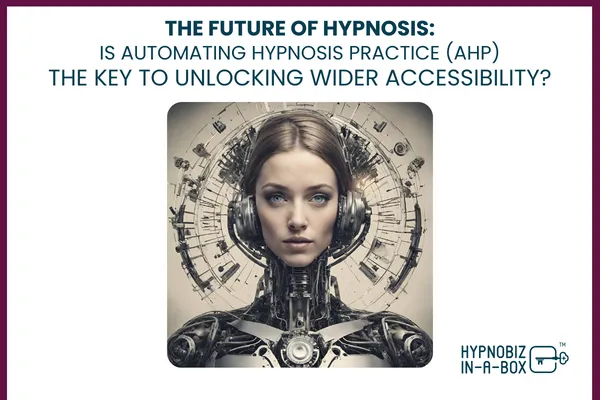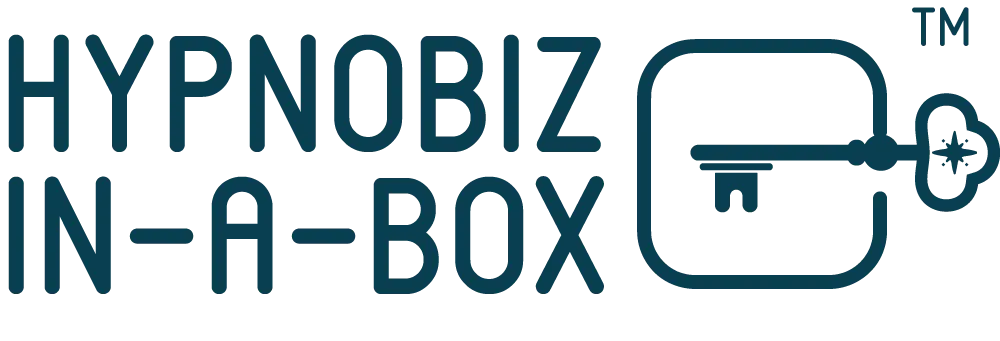
The Future of Hypnosis: Is Automating Hypnosis Practice (AHP) the Key to Unlocking Wider Accessibility?
For centuries, hypnosis has been shrouded in an aura of mystery and misconception. Often portrayed in films as a method for controlling minds or erasing memories, the reality of hypnosis is considerably more nuanced. Today, hypnosis is a recognized therapeutic technique with a growing body of research supporting its efficacy in treating a variety of conditions, including anxiety, pain management, phobias, and even smoking cessation.
However, despite its potential advantages, access to qualified hypnotherapists remains limited. The traditional model necessitates in-person sessions with a trained professional, which can be a financially prohibitive and geographically inconvenient option for many individuals. This is where the concept of automating hypnosis practice (AHP) emerges as a potential solution.
What is Automating Hypnosis Practice (AHP)?
AHP leverages technology to deliver hypnotic suggestions in a pre-programmed manner. This can take various forms, such as:
Mobile Applications: Imagine a user-friendly mobile application that guides users through hypnotic inductions and suggestions tailored to specific objectives such as stress reduction or sleep enhancement. The app might utilize calming visuals, soothing music, and carefully crafted language to induce a state of relaxation and receptivity. Users can choose from various programs addressing different needs, offering a level of personalization within the AHP framework.
Virtual Reality (VR) Applications: VR allows for immersive experiences that can heighten the susceptibility of the user. Imagine a virtual beach scene with calming waves lapping at the shore, gentle breezes rustling through palm trees, and the soothing sounds of ocean waves crashing against the sand. This immersive environment, combined with carefully crafted hypnotic suggestions delivered through headphones, can create a powerful tool for relaxation and positive change.
Audio Programs: Downloadable or streamable audio recordings with hypnotic inductions and suggestions can be a convenient and affordable option. These programs can be designed for a variety of purposes, from general stress reduction to overcoming specific phobias. Users can listen to these programs at their own convenience, making them a flexible and accessible option for incorporating hypnosis into their daily routine.
Potential Advantages of Automating Hypnosis Practice (AHP)
There are several potential advantages to AHP, with the primary benefit being the increased accessibility of hypnosis:
Enhanced Affordability: AHP tools can be significantly less expensive than traditional therapy sessions. Mobile apps and downloadable audio programs can be developed and distributed at a much lower cost than the ongoing fees associated with in-person hypnotherapy sessions. This opens up the potential benefits of hypnosis to a wider demographic, making it a more financially viable option for many individuals.
Convenience and Flexibility: AHP allows users to access hypnosis sessions at their own convenience and on their own schedule. Unlike traditional therapy appointments, which require scheduling and travel, AHP tools can be used anytime and anywhere. This flexibility allows users to integrate hypnosis into their daily routine more seamlessly, potentially enhancing the effectiveness of the treatment.
Standardization: AHP tools can deliver consistent and evidence-based hypnotic suggestions. Traditional hypnotherapy can vary depending on the individual therapist's approach and style. AHP tools can ensure that users receive standardized suggestions based on current research and best practices in hypnosis. This consistency can help to improve the overall effectiveness and reliability of hypnotic interventions.
Destigmatization: By making hypnosis more readily available, AHP could help break down negative stereotypes and normalize its use as a therapeutic tool. The increased visibility and accessibility of hypnosis through AHP tools could lead to greater public awareness and acceptance of this powerful therapeutic technique.
Challenges and Considerations of Automating Hypnosis Practice (AHP)
While AHP offers exciting possibilities, some challenges need to be considered:
The Human Connection: The therapeutic alliance between hypnotherapist and client is a key factor in successful hypnosis. AHP tools may struggle to replicate this rapport. The human connection between therapist and client fosters trust, safety, and a sense of partnership, which can be crucial for achieving positive outcomes in hypnosis. AHP tools, by their very nature, lack this personal interaction, which could potentially limit their effectiveness for some individuals.
Individualized Needs: Not all situations are one-size-fits-all. Complex issues might necessitate adjustments and modifications to hypnotic suggestions, which AHP tools might have difficulty accommodating. Hypnotherapists can tailor their approach based on the specific needs and circumstances of each client. AHP tools, however, may be limited in their ability to adapt to individual variations and complexities.
Ethical Concerns: Hypnosis can be a powerful tool, and ethical considerations arise when putting it into a user-controlled format. Misuse or improper application could have negative consequences. AHP tools need to be carefully designed and developed to ensure user safety and prevent potential misuse. Clear instructions, disclaimers, and warnings should be included.
It is important to view AHP not as a replacement for traditional hypnotherapy, but rather as a complementary tool. Here are some potential scenarios where AHP could enhance the overall hypnosis experience:
AHP as a Screening Tool: Simple AHP applications could act as a first step, helping users assess their suitability for hypnosis and providing basic instructions for self-hypnosis techniques. These introductory apps could offer users a taste of hypnosis and help them determine if they are receptive to its suggestions. Additionally, they could provide information about hypnosis and its potential benefits, helping to manage expectations and address any initial anxieties.
AHP as a Booster: Clients undergoing traditional hypnotherapy sessions could utilize AHP tools to reinforce suggestions and practice self- hypnosis between sessions. Hypnotherapists often recommend self-hypnosis techniques to consolidate the gains made during in-person sessions. AHP tools could provide readily available recordings or guided visualizations that reinforce the therapist's suggestions, promoting ongoing progress and deeper change.
AHP for Specific Conditions: AHP applications focusing on well-defined issues like smoking cessation or sleep problems could offer a cost-effective option for targeted support. These focused programs could provide users with a structured approach to addressing their specific concerns, while also offering a stepping stone to traditional hypnotherapy if needed.
Regulation and Training for Automating Hypnosis Practice (AHP) Tools
As AHP evolves, establishing clear guidelines is crucial. Regulations should ensure that:
AHP tools are developed by qualified professionals with expertise in hypnosis. This ensures that the content is based on sound scientific principles and ethical practices in hypnosis. Developers should have a deep understanding of the hypnotic process and its potential benefits and limitations.
Content is evidence-based and adheres to ethical hypnosis practices. AHP tools should utilize well-established hypnotic techniques and suggestions grounded in current research. Ethical considerations include ensuring user safety, avoiding the creation of dependence on AHP tools, and encouraging users to seek professional help for complex issues.
Clear disclaimers inform users about limitations and the potential need for professional support. AHP tools should not be presented as a cure-all or a substitute for professional medical or psychological advice. Disclaimers should emphasize the limitations of AHP and encourage users to seek professional help if needed.
The Future of Hypnosis: A Collaborative Approach
The future of hypnosis may lie in a collaborative approach that combines the personalized touch of traditional hypnosis with the accessibility and affordability offered by AHP tools. Imagine a scenario where individuals can utilize AHP applications for self-hypnosis practice and targeted support, while also having the option to engage in traditional hypnotherapy sessions with a qualified professional for more complex issues or deeper therapeutic work. This integrated approach could offer a more comprehensive and accessible way for individuals to experience the benefits of hypnosis.
Research and Development in AHP
Continued research and development are crucial for maximizing the potential of AHP. This includes:
Exploring the effectiveness of AHP for various conditions: Further research is needed to evaluate the effectiveness of AHP tools in treating a wider range of conditions. This research can help to identify the specific applications where AHP is most beneficial and refine the development of AHP tools for optimal impact.
Developing more sophisticated AHP tools: As technology advances, AHP tools can become more sophisticated and immersive. This could include the exploration of Artificial Intelligence (AI) to personalize hypnotic suggestions based on individual user data and responses. However, careful consideration needs to be given to the ethical implications of AI integration into AHP tools.
Evaluating user experiences with AHP: Understanding user experiences with AHP tools is crucial for ongoing development and refinement. User feedback can help to identify areas for improvement and ensure that AHP tools are user-friendly, effective, and meet the needs of the target population.
The potential of automating hypnosis practice (AHP) is undeniable. By increasing accessibility and affordability, AHP could bring the benefits of hypnosis to a wider population. However, responsible development and ethical considerations are essential to ensure the safe and effective use of this powerful therapeutic tool. The future of hypnosis likely lies in a collaborative approach that utilizes both AHP tools and traditional hypnotherapy to empower individuals to take a more active role in managing their own well-being. As AHP evolves, it has the potential to become a valuable addition to the therapeutic toolbox, promoting personal growth, positive change, and a deeper understanding of the human mind.
Are you curious to explore hypnosis for your own well-being? Research local hypnotherapists or check out reputable AHP apps to see if they might be a good fit for you. Remember, hypnosis is a journey of self-discovery, and both traditional and automated tools can be valuable guides on this path.

